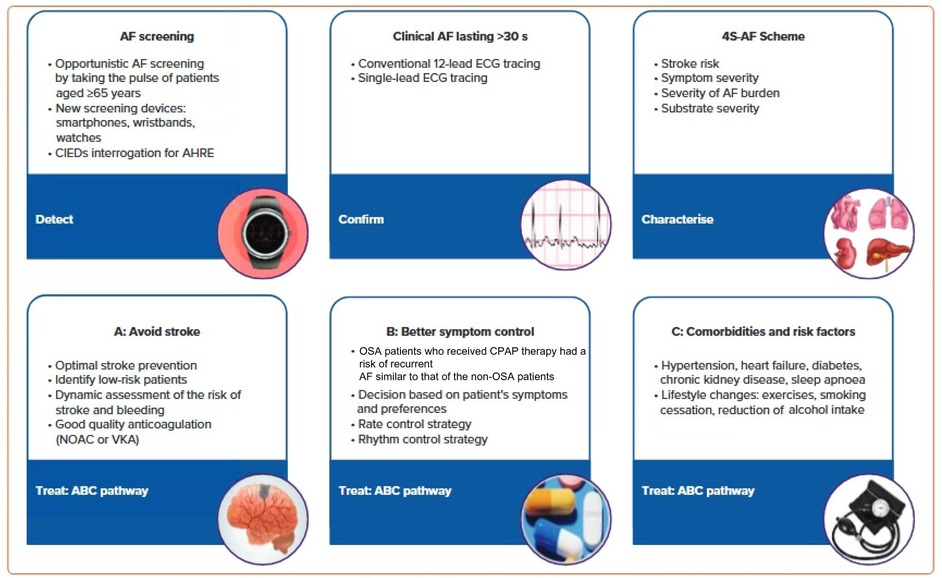Recurrent atrial flutter is a common and challenging supraventricular arrhythmia characterized by rapid, regular atrial contractions, typically around 240–340 bpm. Often caused by a macro-reentrant circuit, most commonly in the right atrium, atrial flutter can recur after initial resolution, especially in patients with structural heart disease, post-surgical states, or comorbid atrial fibrillation (AF). Effective prevention is essential to reduce symptomatic burden, risk of thromboembolism, and the potential progression to persistent arrhythmias.

Mechanisms and Triggers of Atrial Flutter Recurrence
Reentry circuits within the right atrium—particularly the cavotricuspid isthmus (CTI) in typical atrial flutter—serve as the primary substrate for this rhythm disorder. Key contributors to recurrence include:
- Incomplete ablation or reconnection of conduction across the CTI
- Persistent atrial structural remodeling (fibrosis, dilation)
- Coexisting atrial fibrillation
- Autonomic imbalance and inflammation
- Underlying ischemic or hypertensive heart disease
- Thyroid dysfunction
- Substance use (alcohol, stimulants)
Effective prevention requires addressing both the electrophysiological substrate and these modifiable systemic contributors.
Risk Stratification for Recurrent Atrial Flutter
Accurate patient assessment guides therapeutic decisions. The following parameters aid in risk profiling:
| Assessment Tool | Clinical Significance |
|---|---|
| 12-lead ECG | Diagnosis and classification (typical vs atypical) |
| Transthoracic echocardiography | Chamber size, LV function, valvular abnormalities |
| Electrophysiology study | Circuit mapping, ablation target identification |
| CHA₂DS₂-VASc Score | Stroke risk and anticoagulation need |
| Cardiac MRI | Fibrosis and atrial remodeling assessment |
Catheter Ablation: The Gold Standard for Flutter Recurrence Prevention
Cavotricuspid Isthmus Ablation
In patients with typical atrial flutter, CTI ablation is the most definitive and effective treatment. The procedure achieves >95% acute success and significantly lowers recurrence risk when bidirectional block is confirmed.
- Indications:
- Symptomatic flutter
- Recurrence after antiarrhythmic therapy
- Flutter with fast ventricular rates or heart failure
- Efficacy:
- Recurrence rate <10% post-successful CTI ablation
- Adjunctive pulmonary vein isolation if concurrent AF is present
Atypical Atrial Flutter Ablation
Atypical forms, often post-surgical or left atrial in origin, require advanced electroanatomical mapping and individualized ablation lines. Recurrence prevention in such cases is dependent on precise identification and ablation of the non-CTI circuits.
Pharmacologic Management for Flutter Suppression
Antiarrhythmic Drug Therapy
In patients unfit for ablation or with persistent symptoms post-ablation, pharmacological rhythm control is considered:
| Medication | Class | Use Case |
|---|---|---|
| Flecainide | IC | No structural heart disease |
| Propafenone | IC | Paroxysmal flutter, normal LV function |
| Amiodarone | III | High efficacy, used in structural heart disease |
| Sotalol | III | Moderate efficacy, risk of QT prolongation |
| Dronedarone | III | Less effective in flutter than in AF |
Drug choice is determined by underlying cardiac function, renal profile, and comorbidities.
Rate Control as a Secondary Strategy
When rhythm control is not feasible, ventricular rate control becomes essential:
- Beta-blockers: Preferred for rate moderation and exertional tolerance
- Non-dihydropyridine calcium channel blockers: Used in patients intolerant to beta-blockers
- Digoxin: Limited role due to inefficacy during exertion
Anticoagulation and Stroke Prevention in Recurrent Atrial Flutter
Atrial flutter, like AF, carries an elevated thromboembolic risk. The CHA₂DS₂-VASc scoring system is applied to determine the need for lifelong anticoagulation.
- Recommended anticoagulants:
- Direct oral anticoagulants (DOACs): Apixaban, Rivaroxaban, Dabigatran
- Warfarin: Used when DOACs are contraindicated or not affordable
- Anticoagulation post-ablation: Generally continued for ≥2 months; long-term continuation depends on stroke risk profile
Modifiable Lifestyle Factors in Atrial Flutter Recurrence Prevention
Weight Management and Metabolic Control
Obesity contributes to atrial dilation and electrical instability. Structured weight loss improves rhythm stability:
- Target BMI: 18.5–24.9 kg/m²
- Management of: Diabetes, hyperlipidemia, and metabolic syndrome
Treatment of Sleep Apnea
Obstructive sleep apnea promotes atrial remodeling and arrhythmogenesis. CPAP therapy significantly reduces arrhythmia recurrence.
Alcohol and Stimulant Avoidance
- Avoid binge drinking, which can precipitate flutter episodes
- Limit caffeine and stimulant intake, especially in sensitive individuals
Regular Physical Activity
Moderate exercise enhances cardiovascular fitness and lowers recurrence risk. However, high-endurance athletes may paradoxically experience increased arrhythmia burden.
Monitoring and Post-Treatment Surveillance
After ablation or pharmacologic therapy, surveillance is essential to detect recurrence—particularly asymptomatic episodes that increase stroke risk.
| Follow-Up Interval | Evaluation Components |
|---|---|
| 1 Month | ECG, symptom assessment, medication review |
| 3–6 Months | Holter or patch monitor, echocardiogram |
| Annually | Stroke risk reassessment, consideration of recurrence |
Remote monitoring via implantable loop recorders may be used in high-risk patients.
Emerging Therapies and Future Directions
Innovative strategies are under investigation to further reduce recurrence rates:
- Biomarker-guided therapy: Use of troponin, CRP, BNP to guide treatment intensity
- Hybrid surgical-catheter approaches: Especially for complex atypical flutter
- Advanced mapping technologies: High-resolution 3D electroanatomical systems
- Genetic profiling: Personalized risk assessment and drug response prediction
Preventing recurrent atrial flutter requires a multidisciplinary approach that prioritizes rhythm stability, substrate modification, and systemic health optimization. CTI ablation stands as the most effective therapy for typical flutter, with antiarrhythmic drugs reserved for selective use. Lifestyle changes, anticoagulation, and vigilant monitoring complement procedural interventions to offer a holistic, long-term solution. With early intervention and individualized care, we can substantially reduce recurrence, minimize complications, and improve patient quality of life.